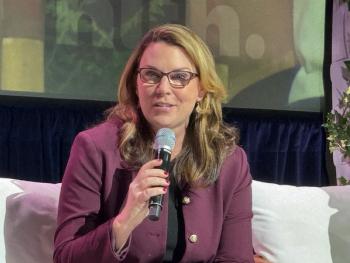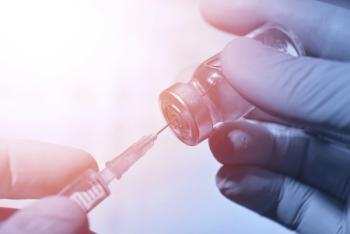
Pacifier Biosensor Monitors Biomarkers in Newborns
The tech could track glucose levels in real time.
Photo/Thumb have been modified. Adapted from Analytical Chemistry 2019, DOI: 10.1021/acs.analchem.9b03379.
Wearable sensors already have the ability to monitor
The biosensor could ultimately help diagnose and treat diabetes in small and young patients, according to
“This initial demonstration of glucose monitoring introduces new possibilities for metabolites monitoring in infants and neonates using saliva as a noninvasive sample,” the study authors wrote.
Researchers designed a proof of concept pacifier with a nipple that contained a narrow channel, so when the infant sucked on it, saliva would be transferred to a detection chamber. In the chamber, an enzyme attached to an electrode strip would convert glucose in the saliva to an electrical signal. The current strength correlated with how much glucose was in the saliva sample. A cellphone app would wirelessly detect the measurements.
Although the researchers have not tested the device with babies yet, they conducted an analysis with adult patients with Type 1 diabetes.
The pacifier detected changes in glucose concentrations in the patients’ saliva before and after a meal, the researchers reported.
Wearable biosensors are typically
Monitoring glucose levels in newborns usually takes place in major hospitals and requires piercing the skin to reach interstitial fluid, the researchers said.
The baby-friendly pacifier biosensor that the researchers developed sufficiently analyzed saliva for biomarkers and could someday be configured to monitor other disease biomarkers.
Monitoring biomarkers in newborns is essential to control low birthweight babies and metabolic diseases, the researchers reported.
Get the best insights in digital health
Related



































